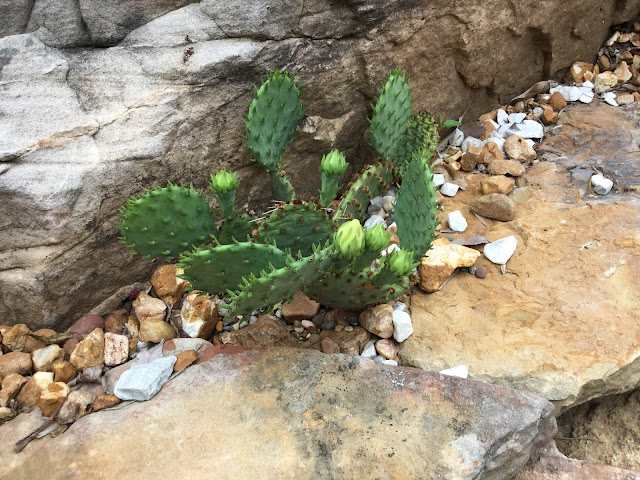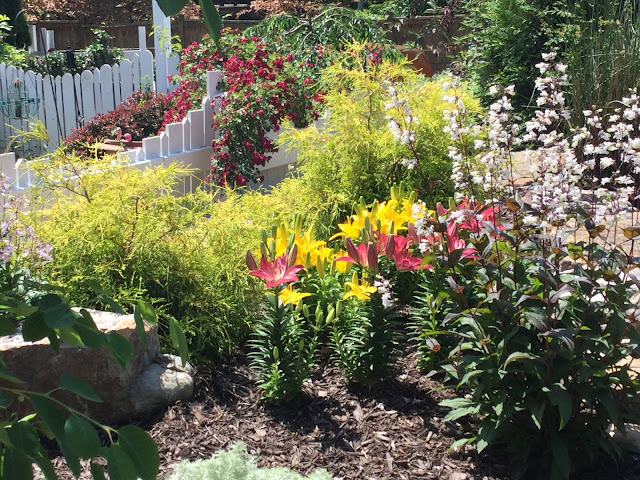Today, the first one opened up. They don't last long, but they are very pretty while they last.
Our east neighbor sent me a text yesterday saying that someone had given them a red and green cabbage plant. They are leaving town for awhile and he wondered if I wanted to plant them in our raised bed. I said "of course"! When it cools off a bit later today, I will probably put them in the west raised bed between the kale and the basil. I need to get and plant some marigolds around the perimeter of the bed in a naive attempt to try to keep the rabbits away.
 |
| Green and red cabbage |
 |
| Chard, beets or weeds? |
I noticed a couple of days ago that I no longer seemed to have any Marimo in the pond. Marimo (毬藻 in Japanese translates literally as "ball seaweed") moss balls are little squishy balls of algae that look a lot like moss, hence the name. In the wild, they roll along the bottoms of rivers, giving them their round shape. They are also viewed as charms in Japan, and even treated as pets. With proper care, Marimo . Benefits (attributes) of the moss balls include:
- they act like little filters, sucking up debris and small amounts of ammonia and phosphates
- they suck up CO2 and release oxygen into the water
- by sucking up the same nutrients as undesirable algae, they deprive invasive algae of those nutrients
- they harbor significant amounts of beneficial bacteria
- they are essentially maintenance free
- they are almost impossible to kill (chlorine will do it)
- they can survive for over a century (unless eaten)
- they grow very slowly, only 3/16" (5 mm) / year
- they do not reproduce
- goldfish find them tasty
- they do not produce dead matter
- critters can use this ball of algae as a smorgasbord, a comfy hiding place, or a means of entertainment
I put 5-10 balls in the pond back in the Spring of 2016 primarily as a secondary source of food for the gold fish while we were on our trips. Well, the fish must have enjoyed them as they are no longer around. I bought some more on-line and they were delivered today. These are "B" grade balls which may be slightly misshapen and may have minor flaws in appearance, but for our pond, they are perfect.
After conditioning them according to the instructions, I put them in the pond. There are 17 balls of various sizes. I'll probably have to dig them out of the skimmer a few times before they hydrate completely and sink to the bottom of the pond.
 |
| Marimo Moss Balls |











